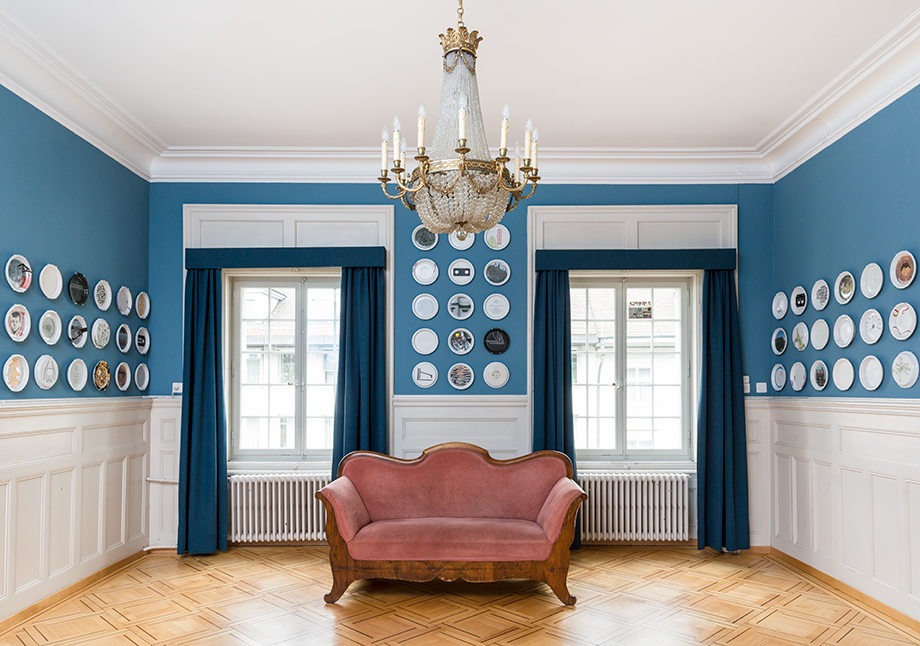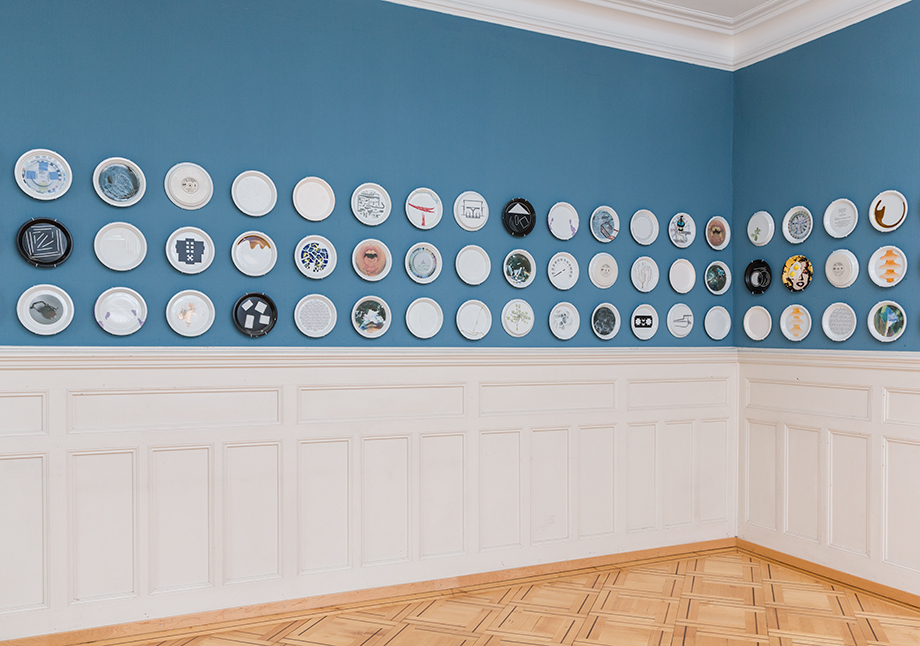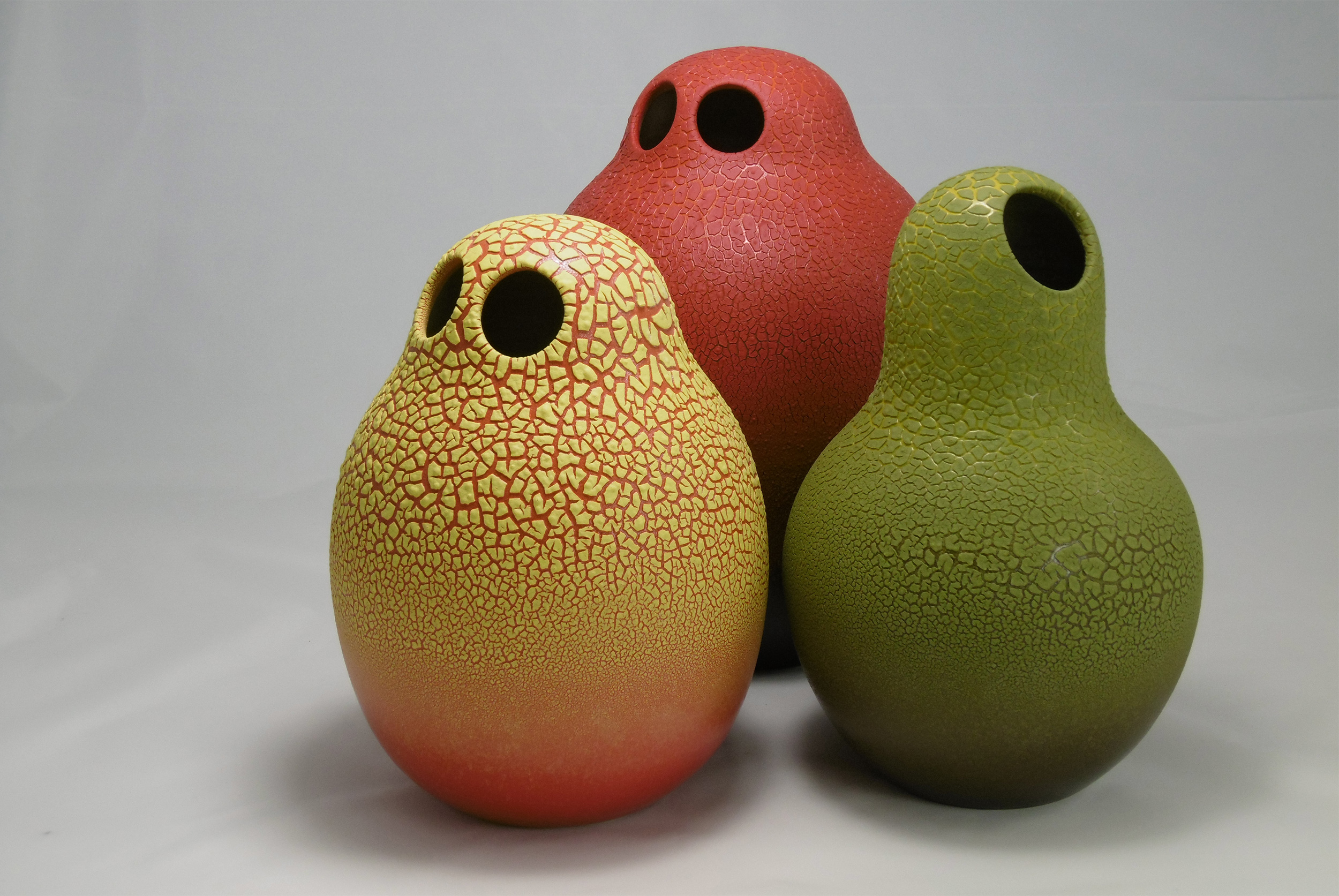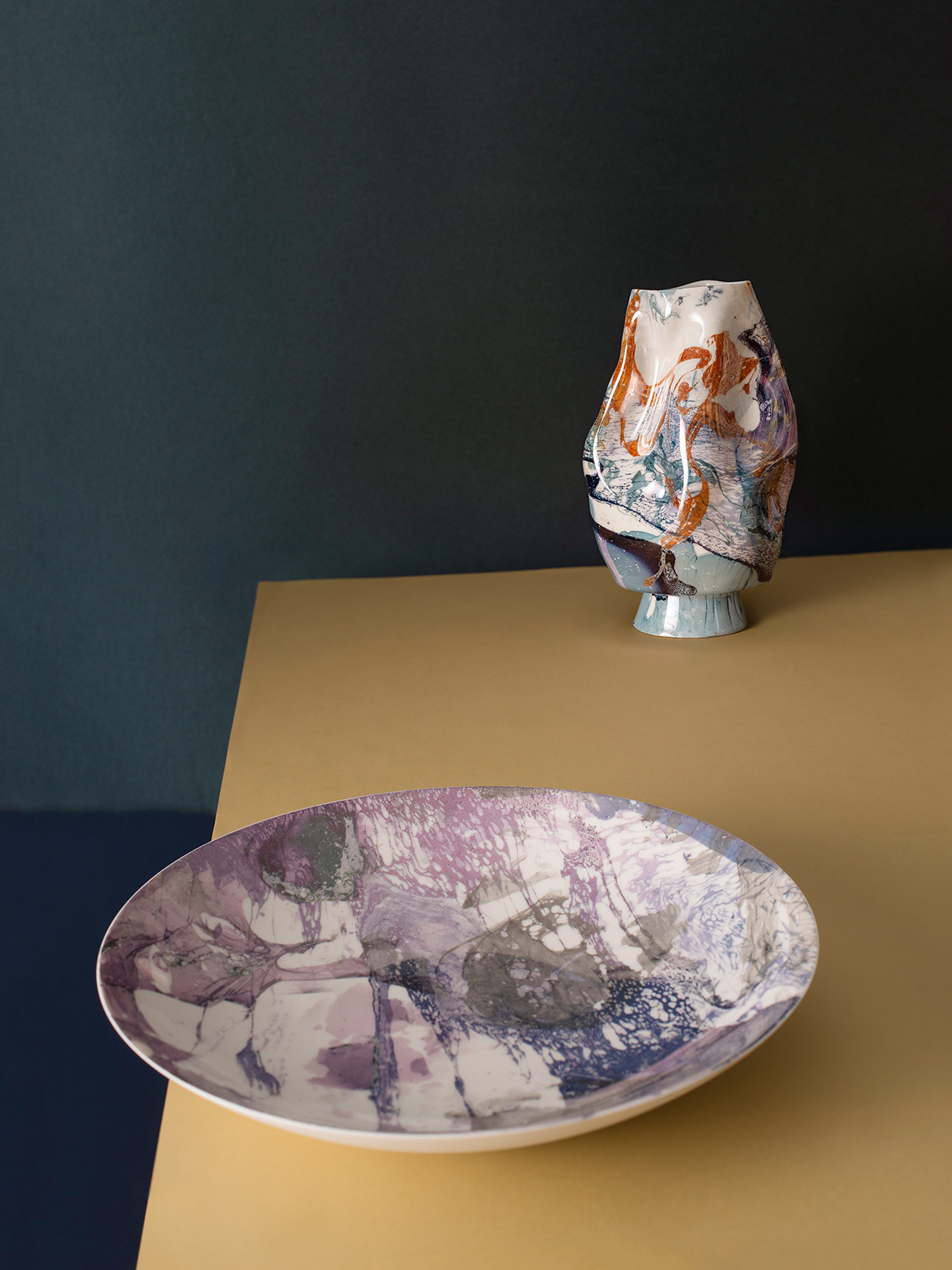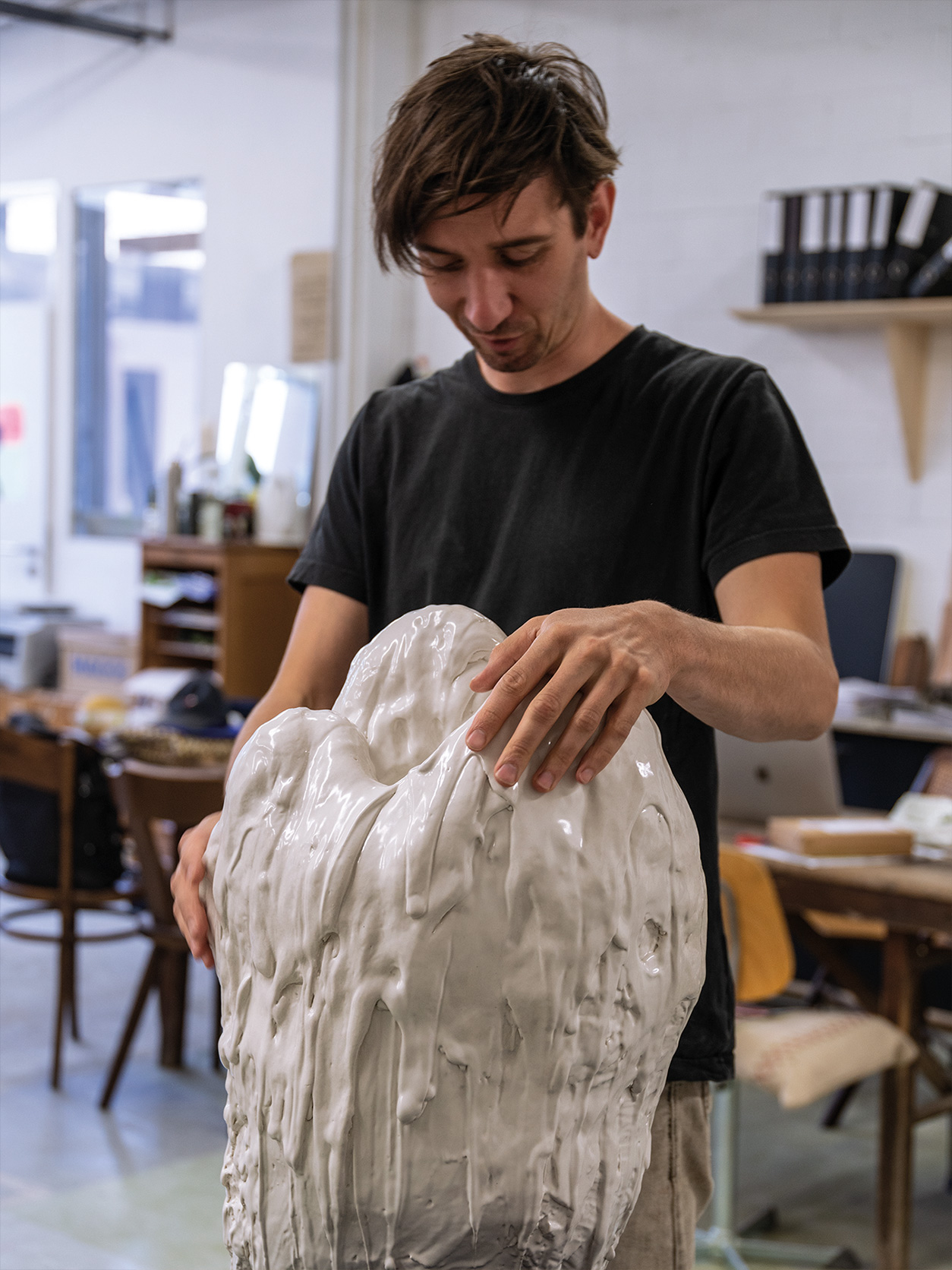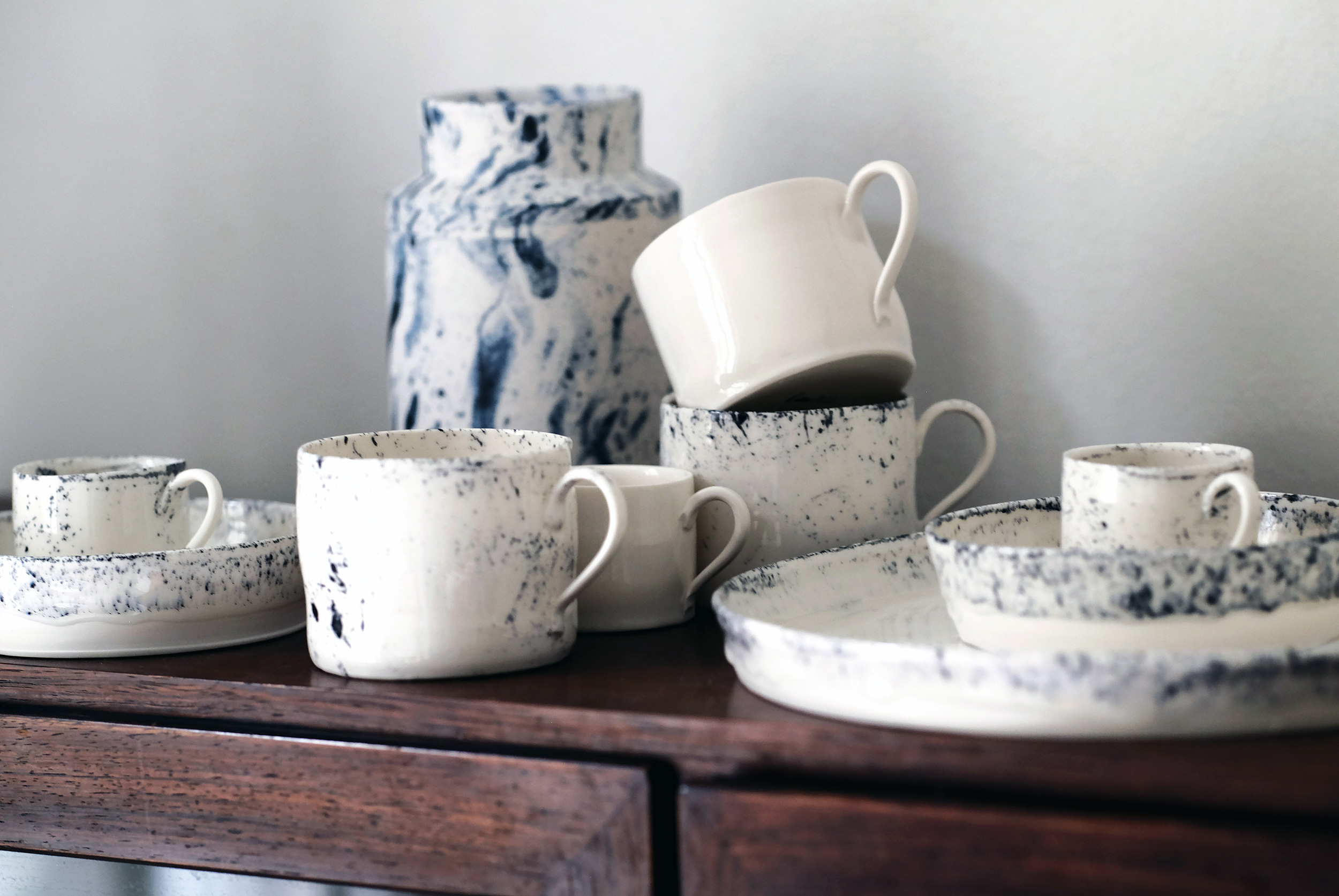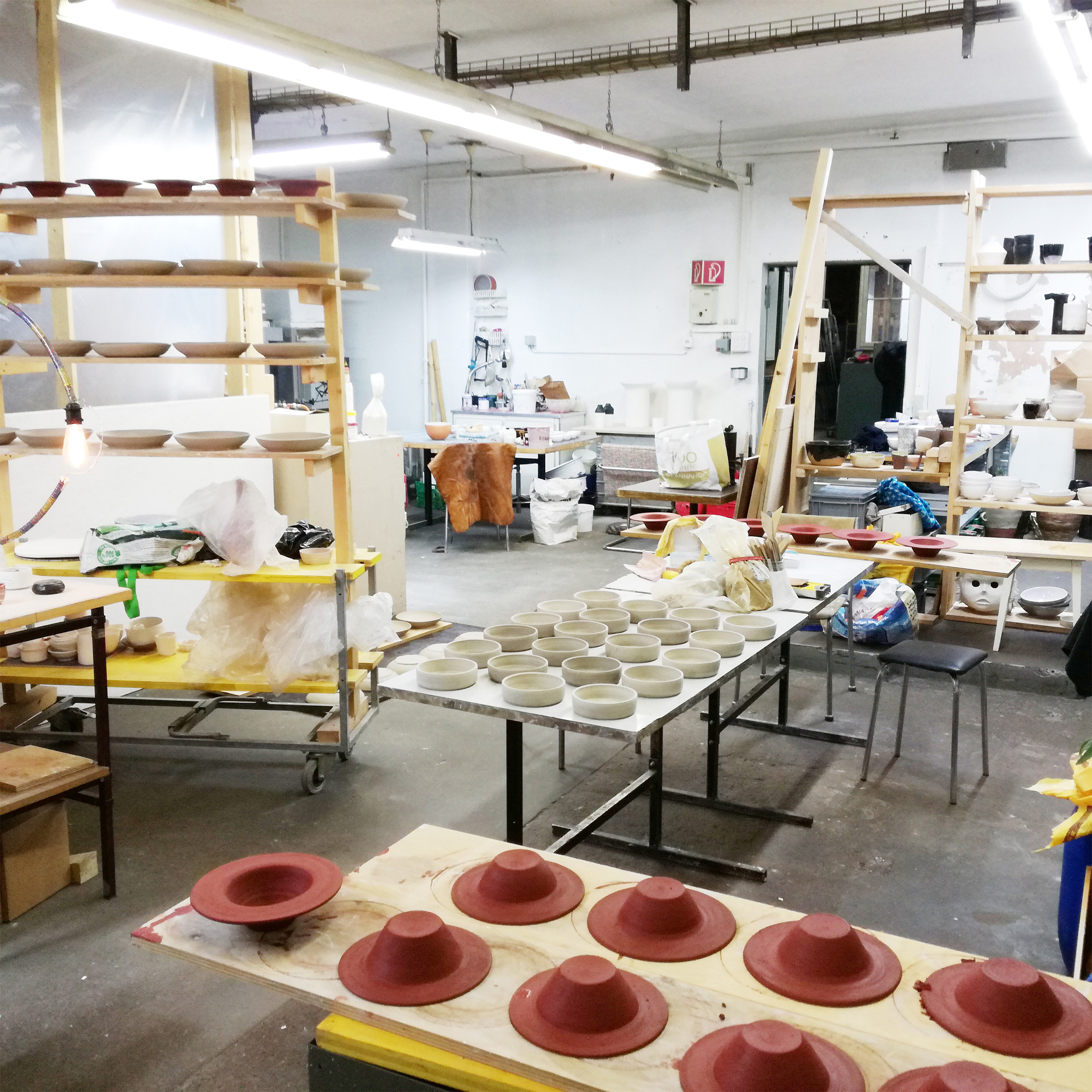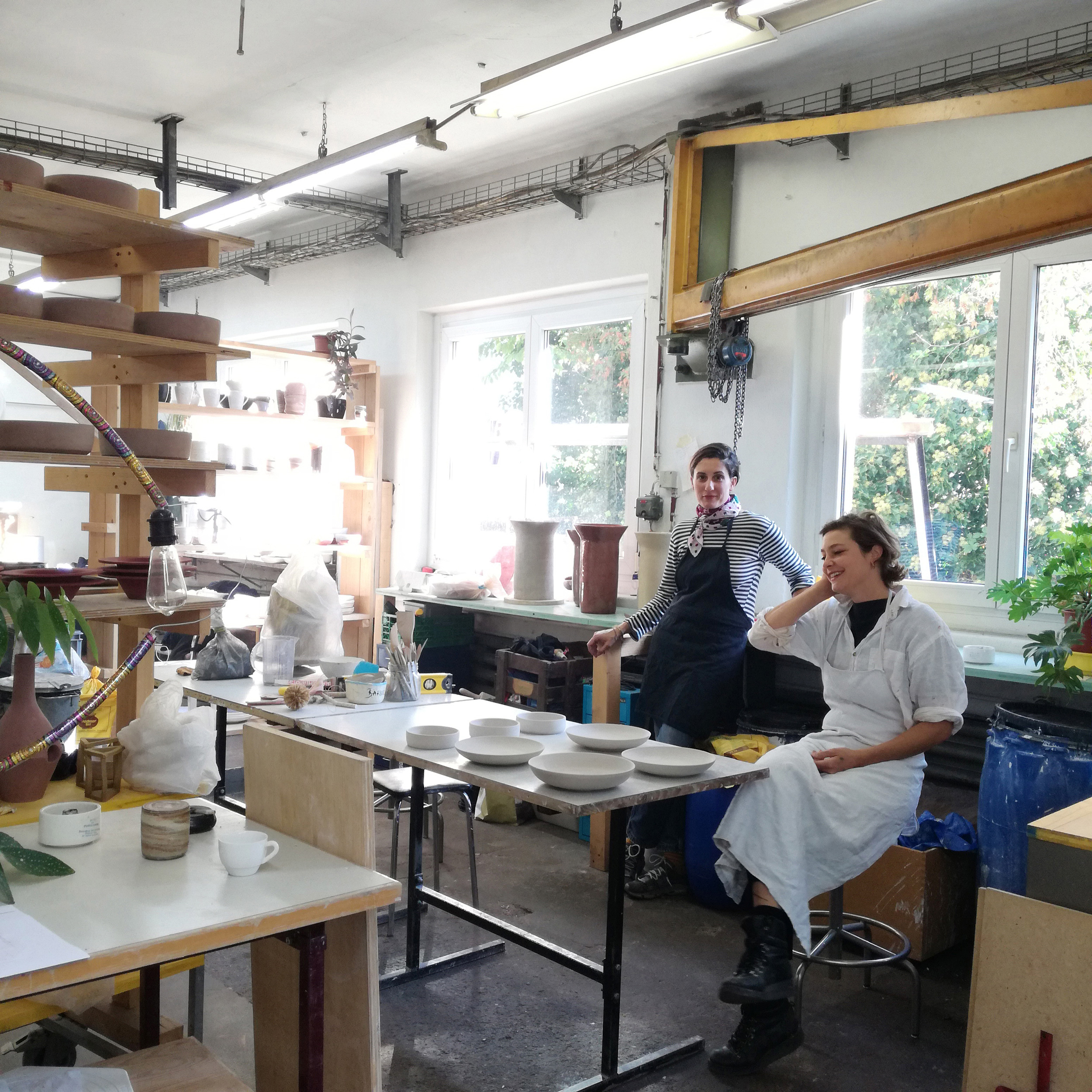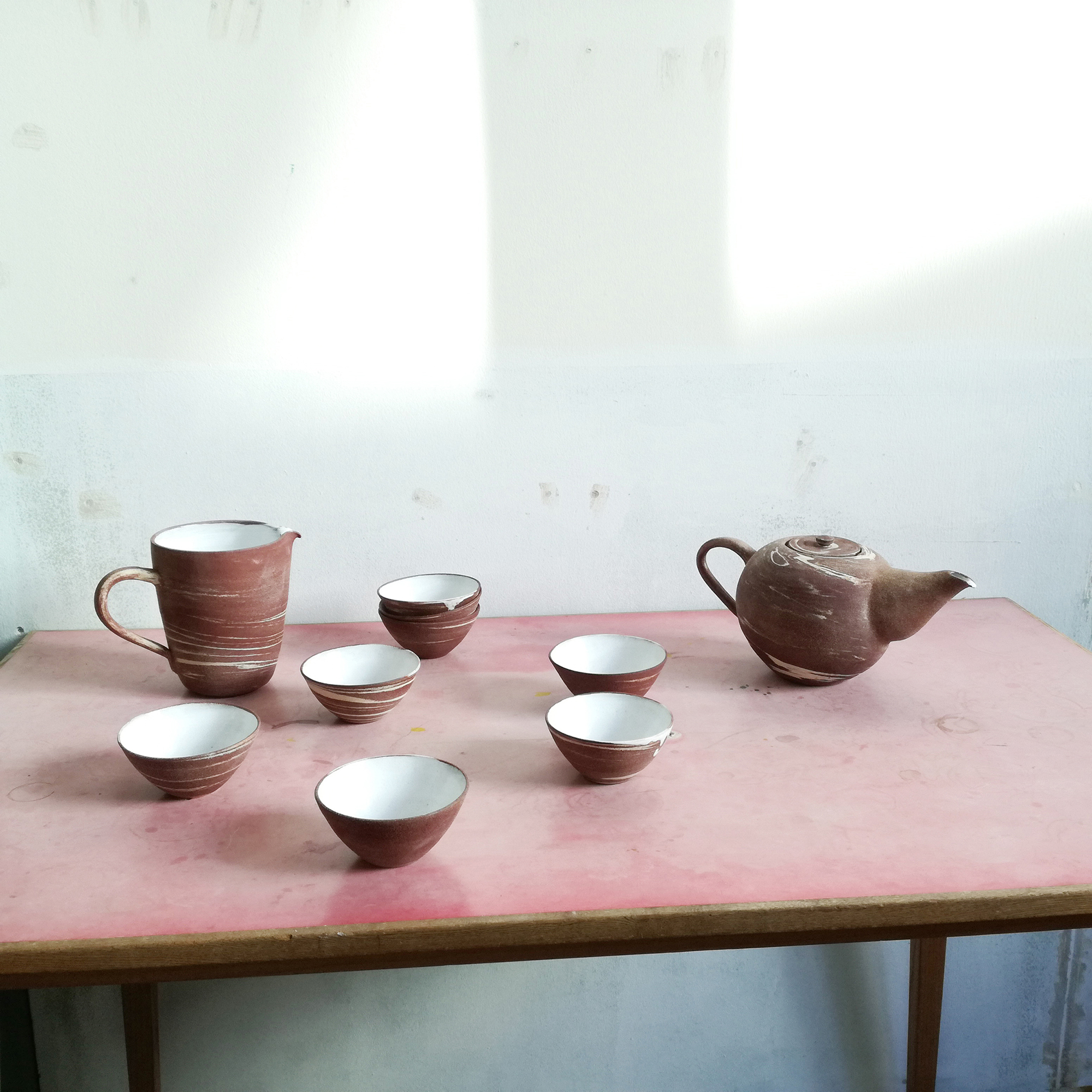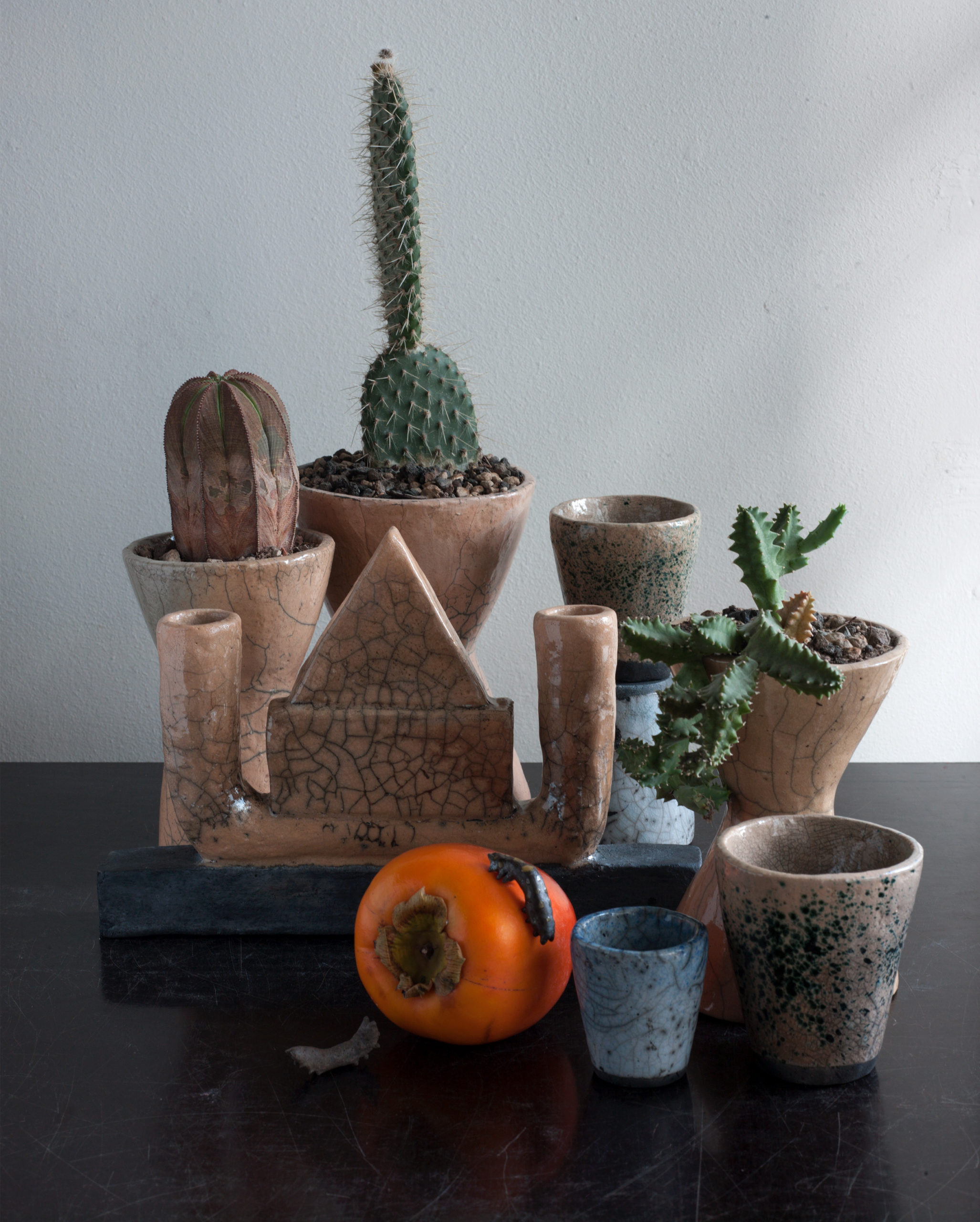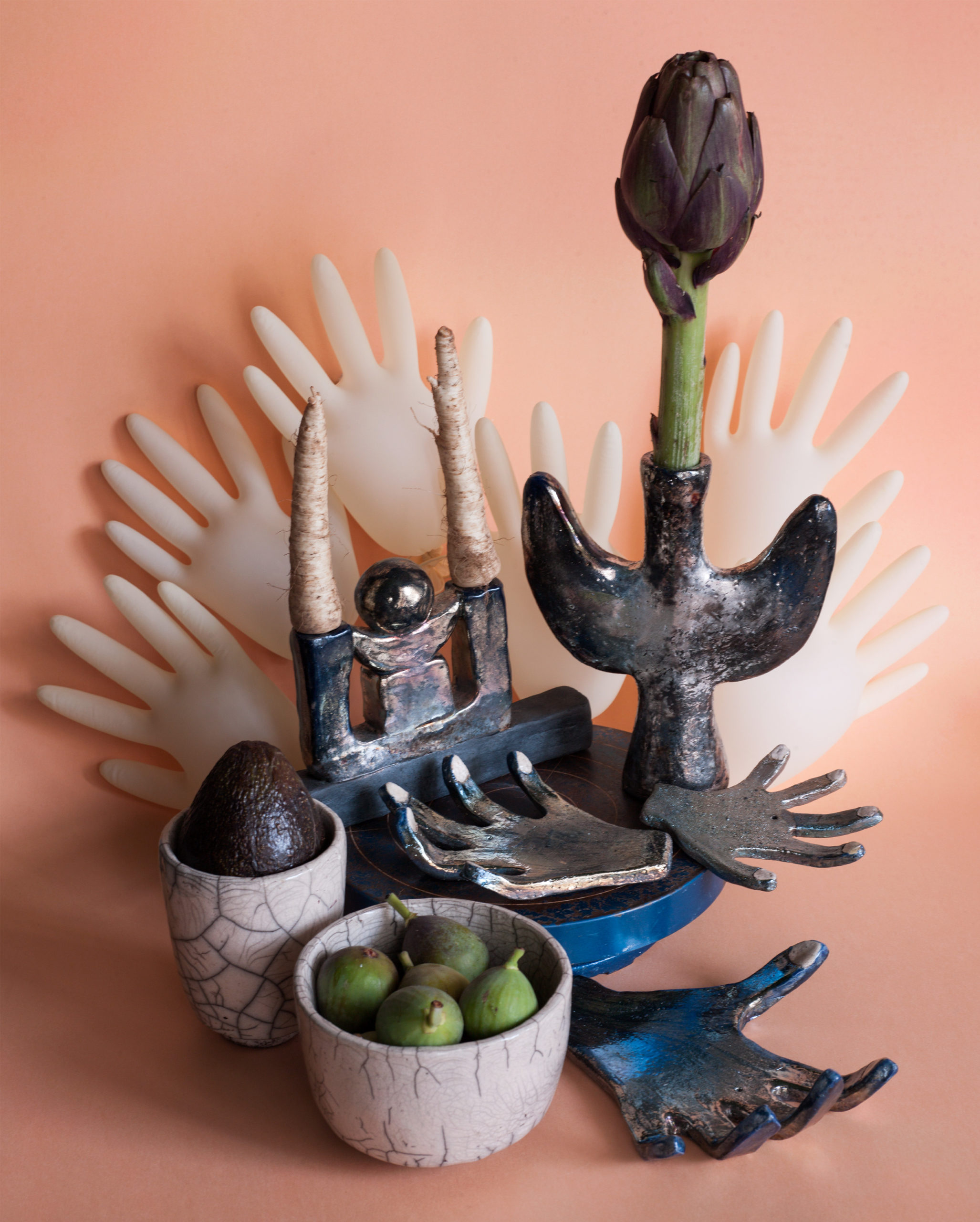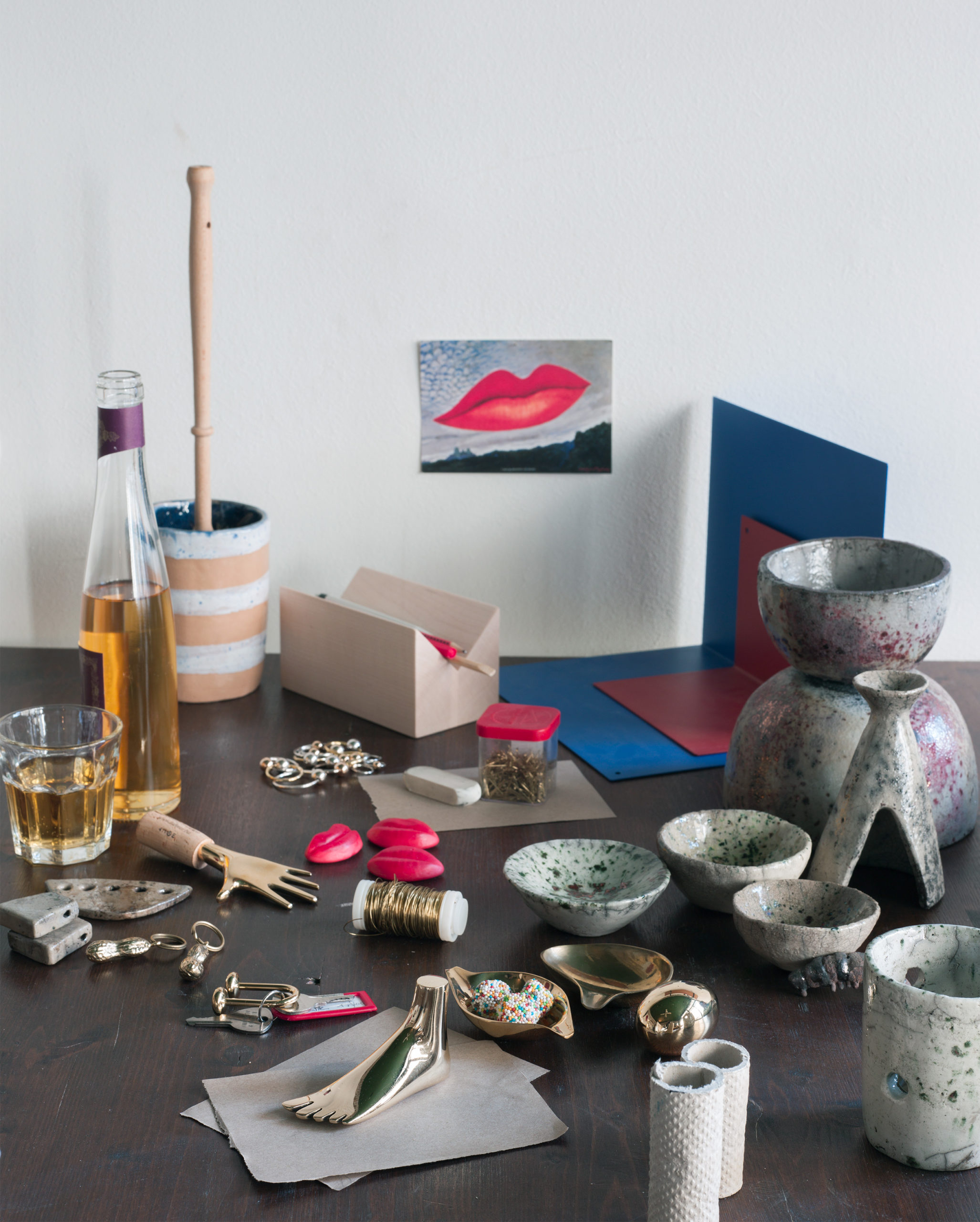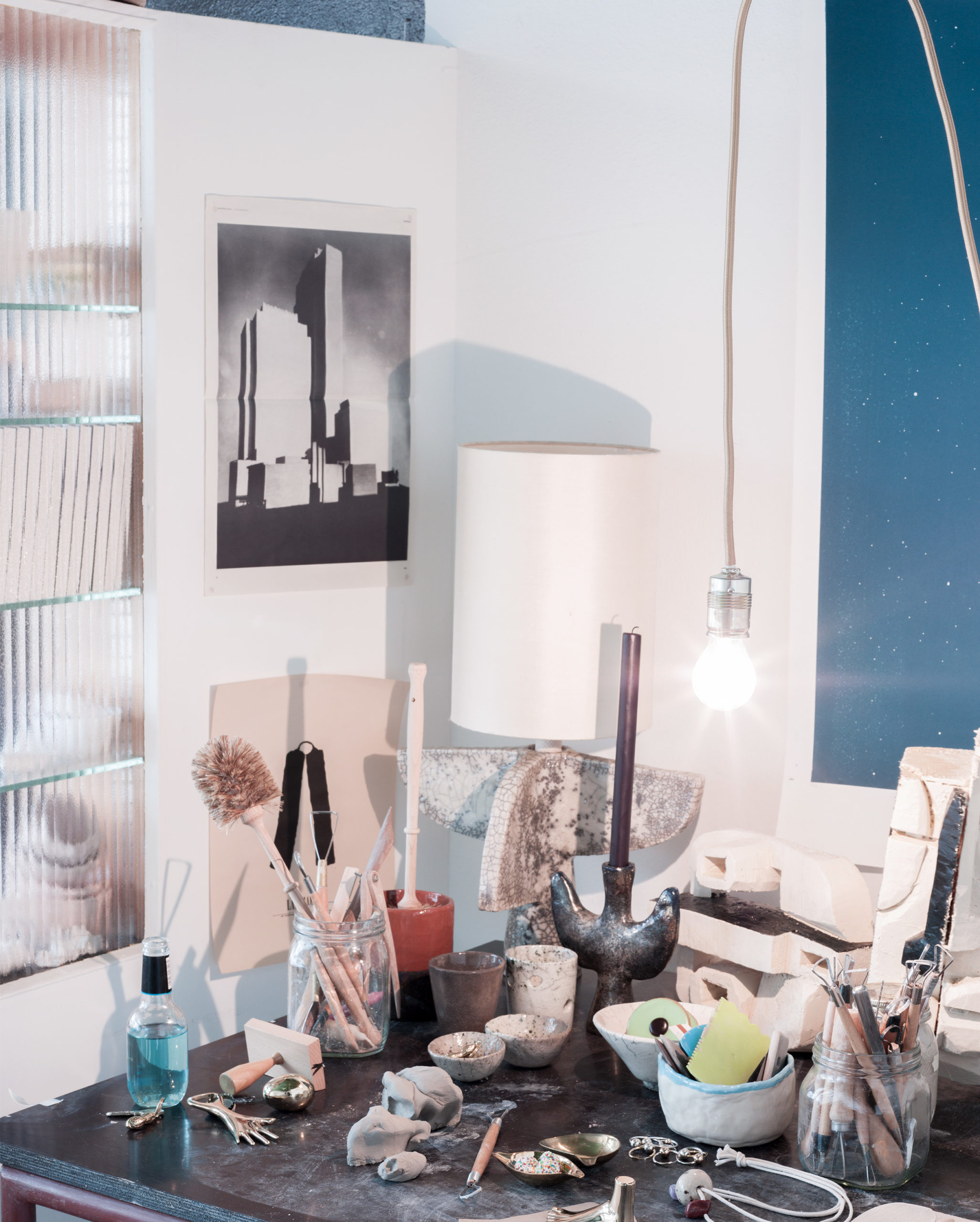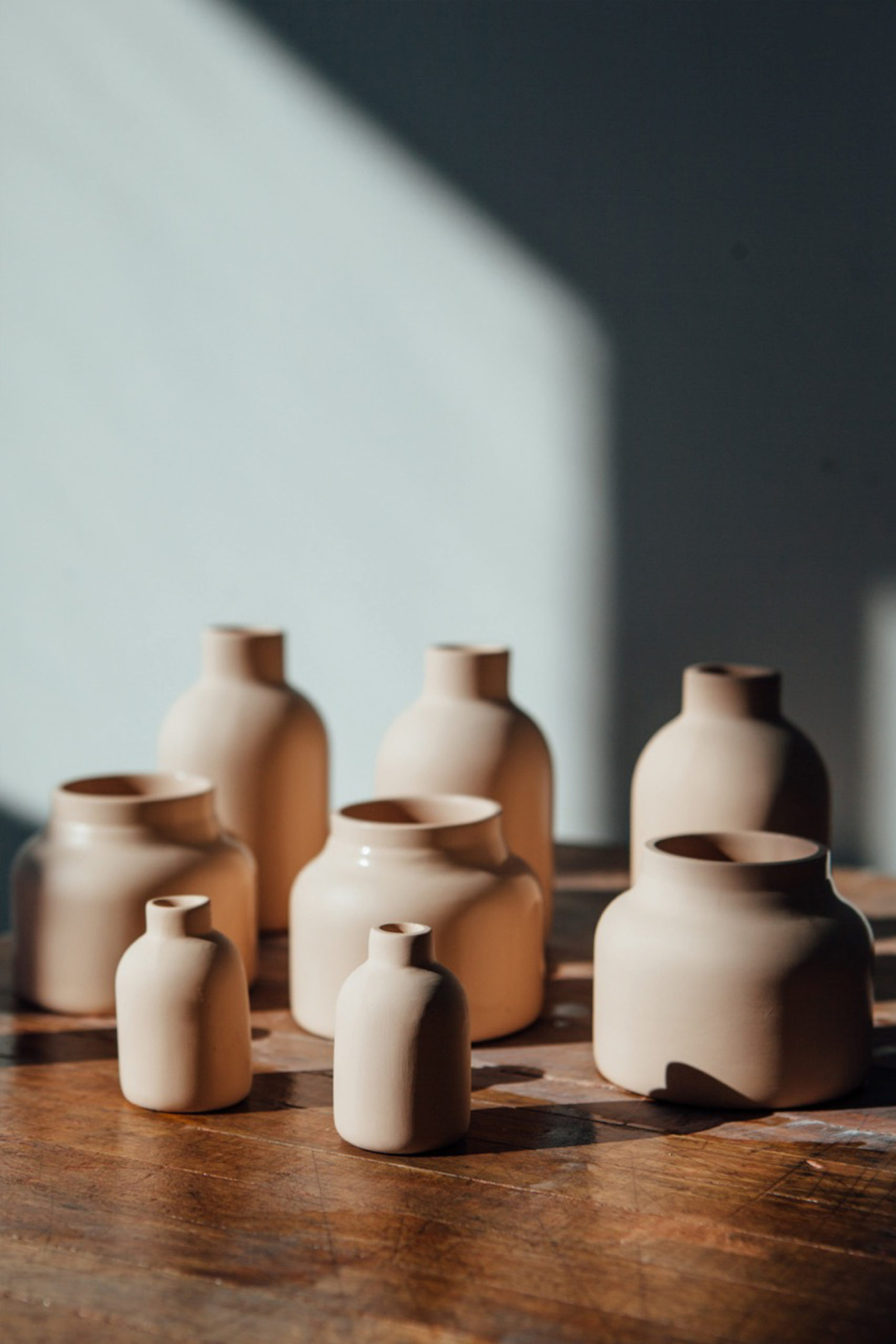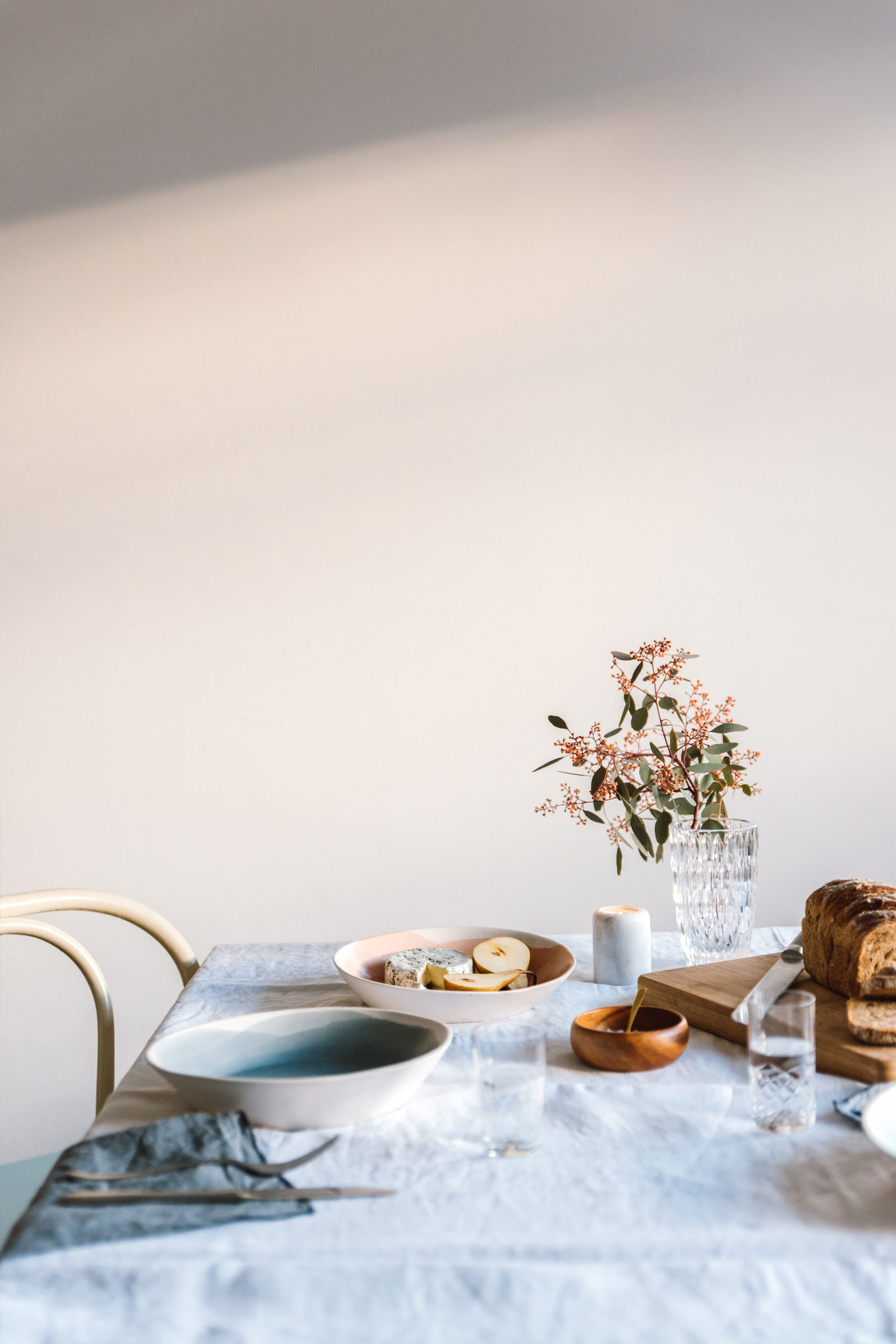Fascination
with ceramics
Panorama
Susanna Koeberle • 08.11.2018
Whether it’s in trendy restaurants, concept stores or the media: Ceramics are currently omnipresent. Our visits to Swiss ceramics studios show different approaches to this fascinating and multi-faceted craft.
Ceramics are currently at a premium. The reasons for the revival of consumer items made of this material (ceramics is both the umbrella term for various mineral substances as well as the name for the products made from the latter) are varied – a glance at the Swiss ceramics scene tries to investigate this. However, anyone who thinks that the fascination with ceramics is «just» a sign of the times, is wrong.
A brief excursion
A brief excursion into the history of ceramics shows two things: Firstly, making items from soil (clay is a certain type of soil) is as old as human culture itself. The oldest figures made of clay originate from the New Stone Age, the first ones were still not fired, and firing was discovered later as a way of stabilising the material. These items had both cultish as well as practical functions. This leads directly on to secondly: We know that ceramics were always present in every culture and epoch since the first time they appeared many thousands of years ago. And that there were periodically waves every now and then, during which attention was focused more sharply on ceramics – such as demonstrated by the current hype. However, without this cultural practice ever disappearing completely.
The observation that ceramic items have always appeared in various forms of art, handicraft and design is exciting. This variety can also be seen today: Artists and designers have re-discovered the material: Ceramics are much more than pottery. This is why they have also overcome their reputation of being dowdy, which was attributed to such items until recently. It makes an investigation of this subject even more attractive.
This variety can also be seen today: Artists and designers have re-discovered the material: Ceramics are much more than pottery. This is why they have also overcome their reputation of being dowdy, which was attributed to such items until recently.
The natural substance is also interesting from a socio-cultural perspective, because it has symbolic significance. For example, the Bible derives the birth of mankind from a piece of loam, into which God breathed life. And sometimes humans also want to play God, such as the figure of Prometheus, who also tried this, as we discover in Greek mythology. The list of such stories could easily be expanded. This shows: Ceramics have a universal character, they almost stand for the origins of humans. This could be a possible reason for the current revival of this material Precisely in the age of digitalisation and mass production, we are once again longing for something that we can physically touch, for things made by hand, for unmistakably individual pieces. As part of this, making something is itself in the foreground – the increase in courses offered in the field of ceramics brings us to this conclusion.
The results of the residential courses and workshops are presented in exhibitions on a regular basis, such as in Kunsthaus Langenthal («Soucoupes volantes») or at HEAD as part of the «LiveInYourHead» exhibition programme
CERRCO
«Ceramics are a material, from which everyone can make something of their own», says Magdalena Gerber, who manages «CERRCO» in Geneva together with the artist Christian Gonzenbach . The «Centre d’expérimentation et de réalisation en céramique contemporaine» (Centre for experimentation and implementation in contemporary ceramics) belongs to the University of Art and Design (HEAD) in Geneva and was established in 2009, after the Bachelor course in ceramics had been discontinued at the school. HEAD wanted to retain a strong centre and a platform for contemporary ceramics, because this handicraft had a long tradition in the region. «CERRCO» offers several things: It provides residential courses of several months for artists, designers and architects, whereby the number of these residential places could be increased from two to three this year. However, the studio is at the same time open to all students at HEAD. In addition, it accepts mandates from outside and undertakes commissions. Research is also an important part of the centre’s activities. Various exhibitions give an insight into the results of the workshops and residential courses. In addition to three specialist training centres in Bern, Vevey and Geneva, HEAD is the only university of applied sciences in Switzerland with its own ceramics department. Imparting knowledge is necessary because the handicraft needs to be learned. A lot of things cannot be planned with ceramics: What does the shape look like after firing? Or might it even break? How does the glaze react? One has to be able to deal with such uncertainties, which is not something that every creative mind can cope with. Usually designers and artists quickly notice that they are dependent on professional support. For a few people the residential course at «Cercco» is a unique experiment, others would catch the ceramics bug, says Gerber.
The ceramicist works together with various international and Swiss artists and designers. He also develops his own collections. He is a joint initiator of «Keramikpanorama», which takes place in Murten every other year.
Peter Fink
People, who work with ceramics on a daily basis, are also obviously infected by the bug. Visits to various ceramics studios make it clear that the understanding of pottery and how it is carried out can have very different results. All the protagonists share the common factor of a great passion for the thing. One of the central figures in the Swiss ceramics scene, who also represents a first port of call for many newcomers, is Peter Fink. The skilled potter originally comes from the German-speaking part of Switzerland, but ended up in Ependes near Fribourg (Freiburg) 24 years ago after a few detours. His spacious pottery workshop is both a shop and workshop all in one. Here Fink sells his own ceramics collections that are made in series. Fink works both on the potter’s wheel, which is the more flexible and faster form of production, as well as with plaster moulds. The latter is more complex and needs more time to develop, as he explains. A typical way of working and thinking for this experienced craftsman is managing a large network and collaborating with a whole range of clients.
For example he regularly invites artists over to develop and exhibit something together. Over the years he has made a name for himself with his expertise and received an increasing number of inquiries and orders from third parties. He likes looking for solutions for the ideas of other designers and experimenting; his input is frequently not only technical, but also concerns the shape – the two cannot always be separated so precisely. This work also enables him to distance himself from his own creative work. He doesn’t see himself as an artist, because he has too little staying power for this, he explains modestly. This is how a business model with various pillars developed. They include his own production and working for external clients, including young designers such as Dimitri Bähler, Tomas Kral, Nicolas Le Moigne or Mathieu Lehanneur, to mention just a few. In addition, he teaches regularly at universities of applied sciences and other institutions or gives courses in his studio. He also develops complex prototypes for schools. Briefly: The energetic true professional is never bored. The fact that he still finds time to establish initiatives such as «Keramikpanorama», is remarkable. The fourth edition of this curated open-air exhibition (participants have to apply and are assessed by a jury) in Murten was held in September this year. The aim is to make this platform even more professional, explains Fink.
This is because even if every urban dweller who is tired of technology seems to want to work with ceramics: Ceramics as a profession is only something for very few people. Even many students from the specialist classes tend to move away from it after their training, states Peter Fink thoughtfully.
Laurin Schaub’s items are a contemporary interpretation of prestigious porcelain. They therefore radiate the same value without appearing old-fashioned.
The «Basic Collection» crockery is affordable, while the items from the «Bushes and Trees», «Lustre» or «Terrazzo» series are based on more complex production methods and this also makes them more expensive. Individual pieces have been designed by Laurin Schaub exclusively for Galerie Okro in Chur.
Laurin Schaub
One of the skilled potters, who remained and who has recently become a talking point, is Laurin Schaub. Until 2014 he belonged to the «Good Life Ceramics» collective. With his unusual objects, which are more like landscapes than traditional crockery, he won the Swiss Design Award this year. As well as experimental pieces, in which he explores the boundaries of the material, he also offers a more traditional and affordable range. Schaub works with porcelain, a material that has very special properties. It shrinks more when being fired and is fired at a hotter temperature than clay. It can also be worked on as a liquid. Thanks to pouring it into plaster moulds, a high level of precision can be achieved with the shape. Items made of porcelain are characterised by being very hard and dense. With its thin wall thickness, they are also translucent. Laurin Schaub’s items are a contemporary interpretation of prestigious porcelain. They therefore radiate the same value without appearing old-fashioned. Schaub has also been working with galleries for a long time and even creates exclusive individual pieces for new catering concepts, such as «Steinbeisser». The fact that the work of people creating ceramics is gaining increasing recognition once again, is something that is appreciated by Schaub. However, he also warns about romanticising the handicraft. Ceramics are a very complex thing and above all no lucrative matter. The boom will also not lead to more people deciding on professional training, he believes.
The simple crockery by Ursula Vogel comes to life with its subtle features, which make a unique piece out of a simple item. Time and again exciting commissions arise such as for the «Maison Manesse» restaurant or the «Houdini» cinema (in collaboration with Barbara Postiasi).
Goodlife Ceramics
Ursula Vogel also completed the same training as Laurin Schaub: Pottery apprenticeship and then the specialist class in Vevey. She was part of the «Good Life Ceramics» collective and has retained this name until now. The ceramicist does not want to exhibit her own work – she is much too modest for that. Appearing as a group enables all the participants to use it as a springboard in their own way. While Ursula Vogel previously always had a job to earn her bread and butter, since the joint venture at Sihlpost in Zurich, she can live from her ceramics. Her main customers are high-end gastro-businesses, which believe distinctive crockery is important. It’s another experience when one eats a dish from a handmade individual piece instead of from faceless mass-produced goods. She observes a changed perception: «Twenty years ago tidy aesthetics also predominated in restaurants, but today you increasingly find handmade things», she says. She also works with porcelain, which thanks to its smooth surface that is similar to glass, is easier to care for than porous earthenware, which only receives this feature through the glazing process. Porcelain is so stable that one can easily refresh the glazing, which is something the ceramicist undertakes for some restaurants. This is called sustainable. She has not yet designed an actual shop collection. Selling items in shops is problematic because the intermediate trade involves higher prices and there is also less left over for the producers. Ursula Vogel uses sporadic pop-up formats, which she organises with like-minded people, to sell her simple, streamlined designs. Such networks are important and promote an exchange of creative ideas.
«Twenty years ago tidy aesthetics also predominated in restaurants, but today you increasingly find handmade things»
Ursula Vogel
Barbara Postiasi is fascinated by the ancient Raku pottery techniques. After the first firing process, the pieces are placed in a container with organic fuel, which is how the typical black cracks appear.
Barbara Postiasi
For the last year Ursula Vogel has been sharing the studio with Barbara Postiasi, who makes Raku pottery under the name «Tipi». «This Japanese firing technique with its reference to the four elements fascinated me from the outset», explains Postiasi. The self-taught potter actually wanted to attend a further training course, but this wasn’t available for Raku pottery, so she obtained her knowledge from other ceramicists, who work in this way. She continues to learn the most by trying things out and this is how she gains experience with the capricious (because it’s unpredictable) Raku pottery technique. In the meantime she has become more courageous and has expanded her repertoire. She has already made table legs, lamp bases or even toilet brush holders from Raku pottery. By sharing the workspace with Ursula Vogel, some joint, adventurous pieces have been created: a mixture of Raku pottery and porcelain. Overall the desire to experiment is a common feature of the new generation of people working with ceramics. They want to try out new things, not only concerning the material, but also with regard to their business models.
Hanna Büker pours her porcelain crockery. Although this creates extremely precise and foreseeable shapes, every piece is still unique because of the individual glazing.
Hanna Büker (Where Shadows Fall)
The search for a new way of marketing a project intelligently, recently prompted Hanna Büker to start an in-depth course at Bern University of Applied Sciences in «Design Entrepreneurship». She found ceramics in a round-about way. After training as a translator, she noticed the urge propelling her towards creative handicraft. This led to the «Style and Design» course at Zurich University of the Arts (ZHdK), a course that is extremely broad. One also has to be able to deal with this openness, says Büker. Navigating between the disciplines is no problem for her – on the contrary: That’s what she is looking for. For her porcelain crockery label «Where Shadows Fall», she is working with a 3D-printer during the first stage, then she creates plaster moulds, in which the liquid porcelain mass is poured. Her pieces are simple and suitable for everyday use, thanks to their subtle colour range, they combine with each other well.
And lastly, the completed pieces are photographed, which represents another source of income for her: This is because everyone needs good pictures. All this takes place in her small studio, which she shares with six other creative people, who moreover have nothing to do with ceramics. The exchanges with other professional fields are important to her. She does not primarily see herself as a craftswomen, although she produces everything herself from A to Z. She knows that nowadays one also has to tell stories with products and that the appearance of a brand is as important as the product itself. This has nothing to do with superficiality, but with thinking in concepts. In her further training she is focussing on an exciting design project, which is almost of a sociological nature; it’s about developing items for people who are dying. Is there potential for such products? How do I communicate such a taboo subject so that people feel they are being addressed? These are questions, which place design and items in a broader context. New requirements for our society can also be interpreted from the revival of ceramics.
The current ceramics trend is not simply a fashion statement, but a development, which reflects the change in our way of thinking and living and therefore allows the appreciation of this handicraft to increase even further.
Addresses and tips
Gagosian Galerie, Geneva
«Fire and Clay», with ceramics works by the following artists: Sylvie Auvray, Shio Kusaka, Takuro Kuwata, Grant Levy-Lucero, Ron Nagle, Sterling Ruby, Peter Voulkos, Betty Woodman, until 15 December, www.gagosian.com
Musée Ariana, Geneva
The Museum displays the impressive art and object collection of the patron and collector from Geneva, Gustave Revilliod (1817-1890). Musée Ariana is the only institution in Switzerland to offer a comprehensive overview of the history of ceramics and glass – and is therefore also one of the most important museums of its type in the world. At present an exhibition with contemporary ceramics can also be seen: «Come on baby, light my fire», until 10 March 2019
Galerie Mark Müller, Zurich
«Savoir-faire & laisser-faire», with ceramics works by Cornelia Trösch and Nora Wagner, until 22 December, www.markmueller.ch
Ceramics association
www.swissceramics.ch
Ceramics panorama
www.keramikpanorama.ch
Photography: Simon von Gunten (Peter Fink with Rafael Waber in the studio), Vasen (Werkfoto Peter Fink), Helvetia Leal (Barbara Postiasi), Christian Knörr (Barbara Postiasi), Damaris Berger (Bei Hanna Büker / where shadows fall), Hansruedi Rohrer (Laurin Schaub)
